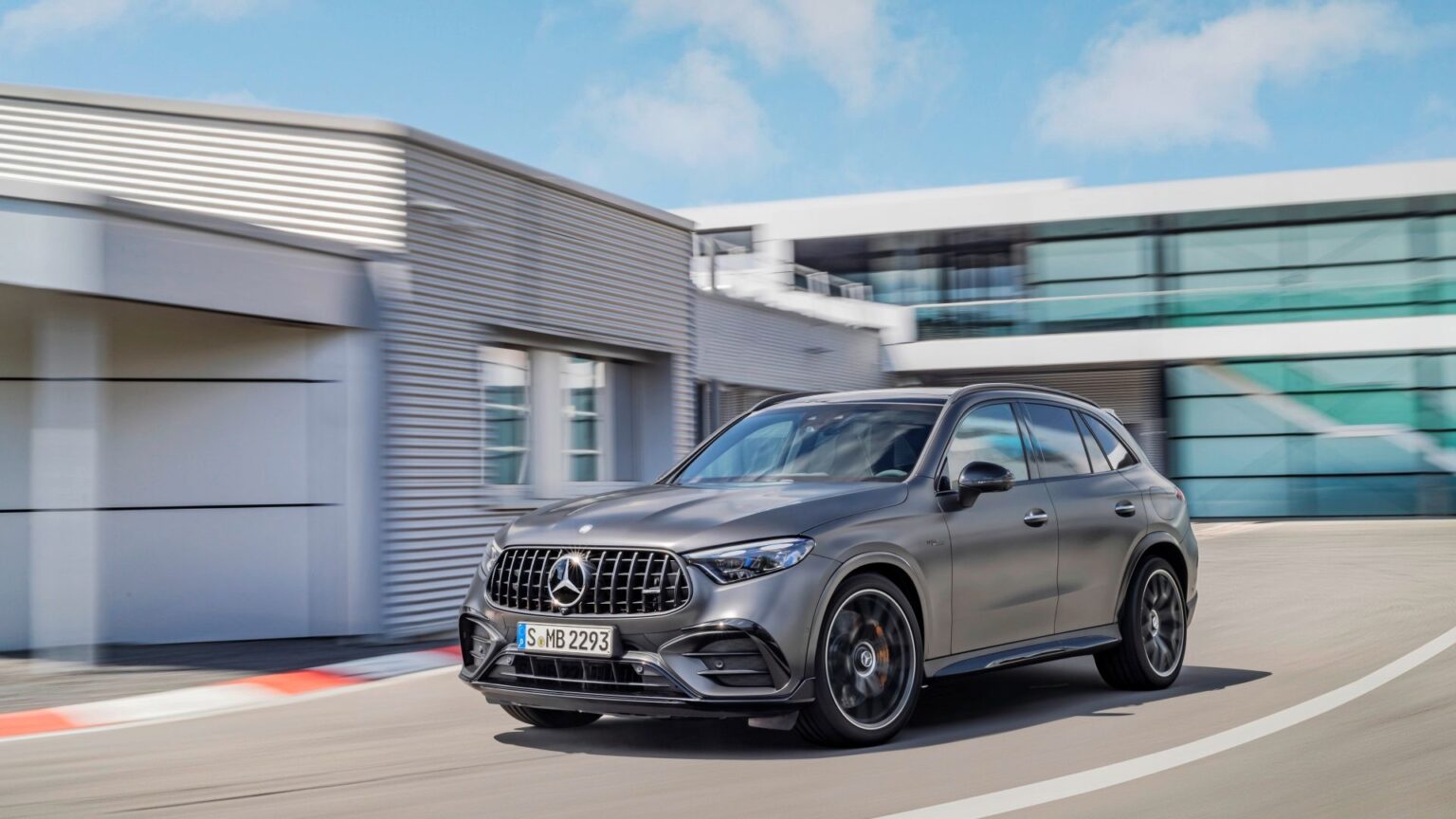Mercedes-Benz told us a few weeks ago that they wouldn’t be cutting their entry cars from U.S. sales. That was allegedly in response to the threat of tariffs, which are now in force at 25 percent for cars made abroad. Now Mercedes is mulling, instead, increasing production of some cars at their Alabama facility, which currently makes the GLE, GLE coupe, GLS, EQE SUV and EQS SUV. Dr. Joerg Burzer, head of Production, Quality, and Supply Chain Management and Member of the Board at Mercedes, told attendees at an event in Stuttgart, Germany, last Thursday that the carmaker is considering moving more production to the U.S. According to reporting by Benzinsider, Burzer declined to say which models would or could be shifted to the U.S.
But which car or cars could Mercedes produce in the U.S. most easily, and what makes the most sense to retool for?
GLC Production To Alabama
We reported earlier that Mercedes saw a 58 percent jump in GLC sales last year, and sold 64,163 in 2024. Possibly this is because Mercedes makes so many iterations of the mid-size crossover.
|
GLC 300 |
$49,250 |
2.0-liter mild-hybrid |
|
GLC 300 4MATIC |
$51,250 |
2.0-liter mild-hybrid |
|
GLC 350e 4MATIC SUV |
$59,900 |
2.0-liter PHEV |
|
AMG GLC 43 SUV |
$67,100 |
AMG 2.0L inline-4 turbo |
|
AMG GLC 63 S SUV |
$86,050 |
AMG 2.0L inline-4 turbo w/150kW electric motor |
With GLCs selling from $49,250-$86,050, that’s a huge price spread, and we’ll wager that with the GLC300 and 4MATIC selling at a very competitive $50,000, many customers probably stretch from, oh, a standard issue crossover running $45,000 up to a GLC for the bling and prestige of a Mercedes. With average prices of new cars just about $50,000, why wouldn’t you want that car to be a Mercedes?
The Mess of Moving Factories
Just because Mercedes may want to make a domestic-market GLC for American customers in Alabama doesn’t mean that’s easy. The GLC isn’t built on the same architecture as the GLE and GLS that are produced on the Alabama factory line. Investing in retooling that plant isn’t a no-cost option. So if Mercedes invests in that modularity, does that cost also get passed on to buyers? Further, there are still the parts that are subject to tariffs. So everything that’s been made to supply GLE and GLS, the EQE SUV and EQS SUV that come off that assembly line aren’t likely to work on the GLC—and if the bulk has to be imported, Mercedes is still facing ramping tariff costs.
The AMG Problem
Mercedes-Benz doesn’t break out AMG sales separately, but 2024 was a banner year for AMG sales in the U.S., and there’s something unique about these cars: Their engines. These are only made by a handful of engineers in Germany, and we don’t see how you maintain what’s special about AMG—making those engines at the AMG facility in Affalterbach—if that no longer happens. There’s a prestige factor to AMG that we doubt Mercedes wants to dilute. Can you imagine your Ferrari made in Illinois? Your Rolex from Kansas City? We’ll take barbecue from K.C., thanks, but not Swiss watches. Ditto, cars with the very distinct AMG engines.
TopSpeed’s Take
It’s still unclear what Mercedes does about several cars and where they’re produced. Many of their volume cars, such as the GLA, are made abroad, and it’s probably untenable for Mercedes-Benz to bring all of its production to U.S. shores without a significant expansion of manufacturing capacity. Vehicles like the GLB are being retooled and the forthcoming CLA almost surely won’t be made in the U.S. Mercedes’ headaches here are the same as those of domestic brands, like Ford and GM, which produce lower-margin cars in Mexico because labor and some parts costs are cheaper. It’s unclear how any shift of the deck chairs avoids the waves of tariff damage we’re likely to see wash over the entire industry.
Read the full article here


